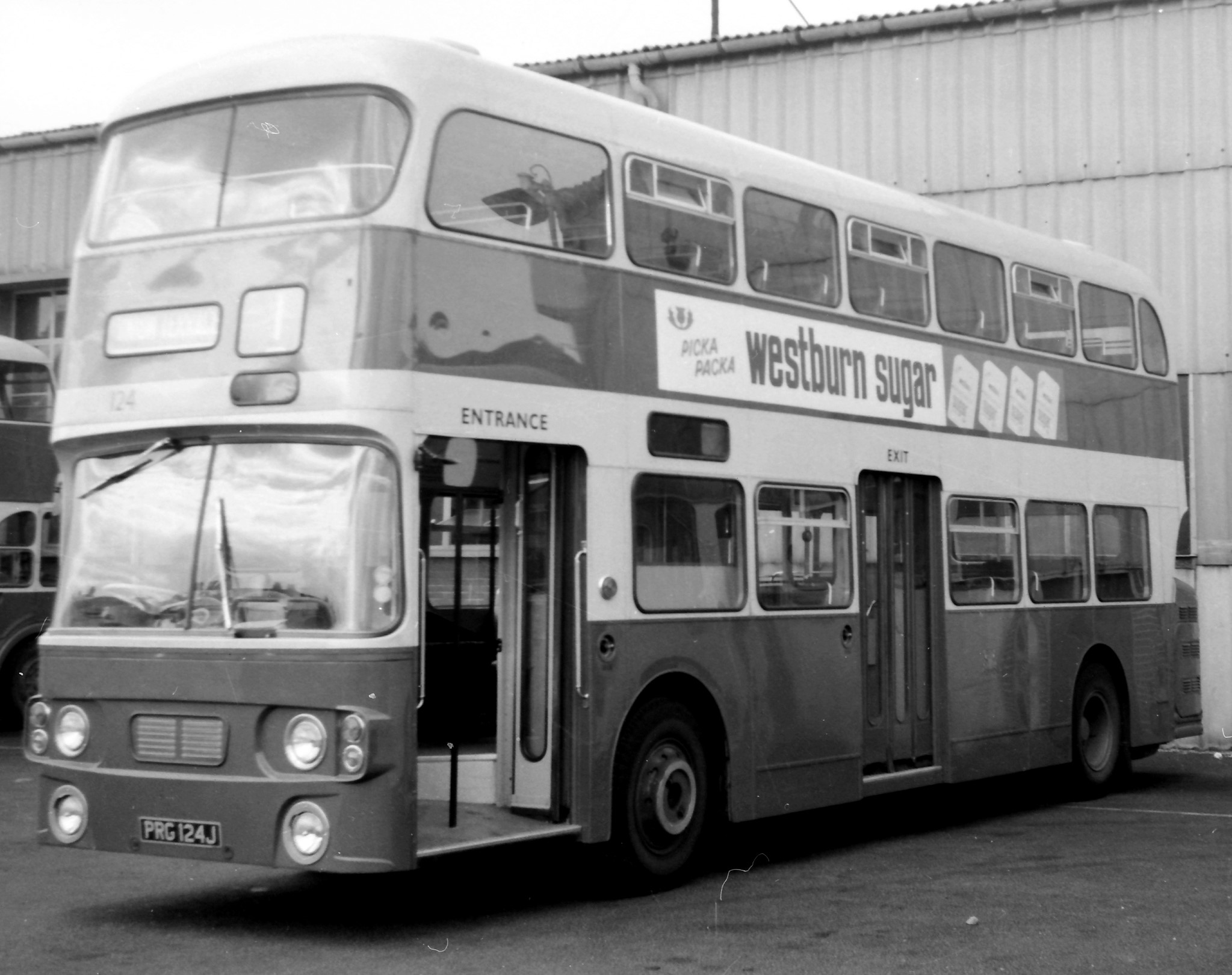Photo kindly donated by Robert McGillivray.
The History
In response to Leyland’s “Atlantean” rear engined double decker (see ACT 154), the Daimler company produced its own rear engined chassis for a double decker, the “Fleetline”. It was on sale from 1960. Aberdeen Corporation’s first Fleetline’s, a batch of 12, came in 1966 and were 77 seaters with a single doorway, Alexander bodied of course. A further change in Construction & Use Regulations in 1961 had seen the maximum length for double decker’s and single decker’s extended to 36’0” but whereas the bus industry quickly latched on to the 36’0” long single decker, there was virtually no interest in double decker’s of this length. What was taken up by some operators from about 1966 was 33’0” long double decker’s, generally with twin doors. Separately in 1966, government approved the use of double decker’s for driver only operation, but it was 1971 before Aberdeen Corporation bought any such buses. ACT124 was one such vehicle in a batch of 20 33’0” long Daimler Fleetlines (Daimler type CRG6LX) with twin door 80 seat bodywork by Alexander of Falkirk.
Known to the drivers as ‘Jumbos’, these vehicles spent most of their working life in Aberdeen on the ‘Bridges’ routes, being too ponderous (i.e., underpowered) for the other densely trafficked routes serving the post war housing schemes. In 1981/2 the whole batch was withdrawn and sold off, some to dealers in England, some to an expanding private operator in Fife, Moffatt & Williamson of the Gauldry. Moffatt & Williamson’s intake included 124 in 1982 and 124 was amongst a number that the company converted to front door only, making them 85 seaters – ideal for school contract work. Sold on again in 1984 to an operator in Essex, 124 was acquired for preservation by the Trust in 2002.

